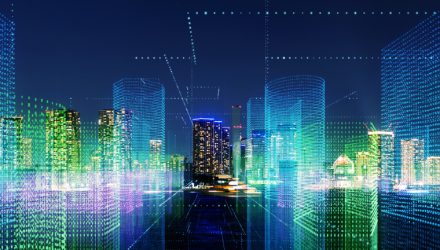The ETF industry took in $800 billion in net inflows, making 2021 a memorable year thus far, and one area that came to the forefront was infrastructure.
In 2020, pandemic-fueled equities favored disruptive technology that investors felt would thrive amid social distancing. In 2021 as global vaccination rates increased, the tide shifted, and that, in effect, helped sway investors towards infrastructure.
“Thematic ETF demand swung from cloud computing and cyber security to electric vehicles and infrastructure in 2021,” a CFRA Research report on ETF inflows notes.
One ETF to consider for infrastructure exposure is the FlexShares STOXX Global Broad Infrastructure Index Fund (NFRA). The fund comes with a 0.47% net expense ratio.
NFRA seeks investment results that generally correspond to the price and yield performance of the STOXX® Global Broad Infrastructure Index. The index reflects the performance of a selection of companies that, in aggregate, offer broad exposure to publicly traded developed and emerging market infrastructure companies, including U.S. companies, as defined by STOXX Ltd. pursuant to its index methodology.
Getting Costs Under Control
Infrastructure certainly got a boost with the passing of the trillion-dollar plan that became a law under U.S. president Joe Biden. Now that pushing for the plan is over, getting actual projects built will be the next hurdle, but there’s another wrinkle: rising costs.
Inflation is rearing its ugly head in the form of rising costs for materials, which could factor into the building of new infrastructure such as roads and bridges. It’s certainly something that infrastructure planners will be watching closely as 2022 comes around the corner.
“If we don’t bring costs under control, this generational investment will yield much less than what a generational investment should yield,” said Eric Goldwyn, an assistant professor at New York University’s Marron Institute of Urban Management and co-investigator of the Transit Costs Project.
For more news, information, and strategy, visit the Multi-Asset Channel.


